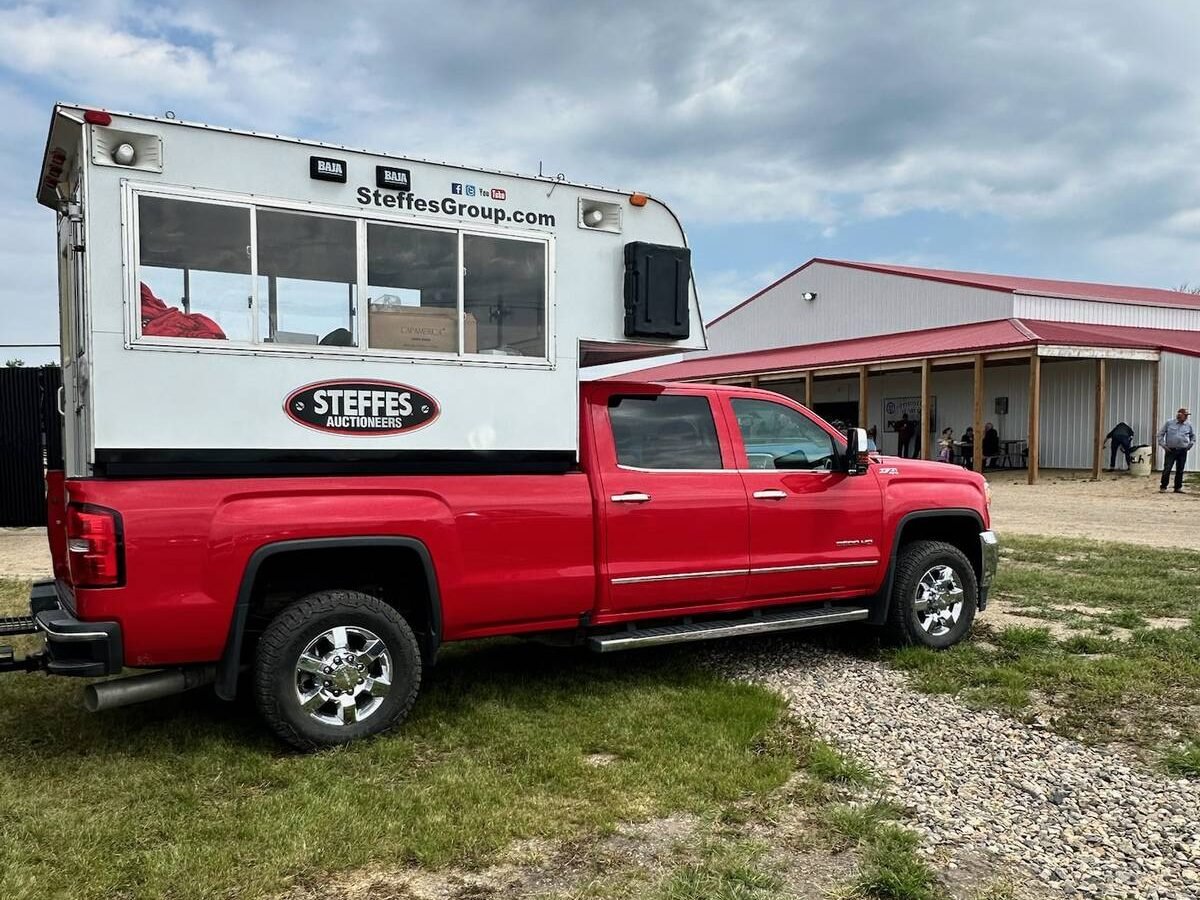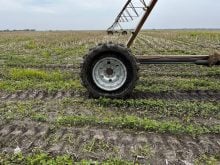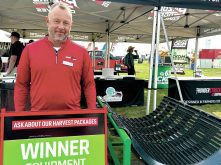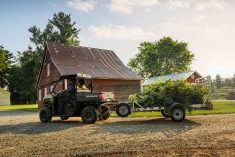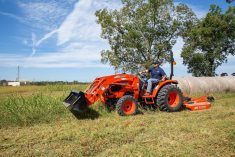For today’s older generation of farmers, going to an on-farm auction, having a piece of pie baked by the local ladies’ auxiliary, running into several friends and neighbours and coming home with at least some small item is something they’ve likely done many times —and enjoyed as an off-farm outing.
But times have changed, with the number of live, on-farm auctions seeing a drastic decline in recent years.
Read Also
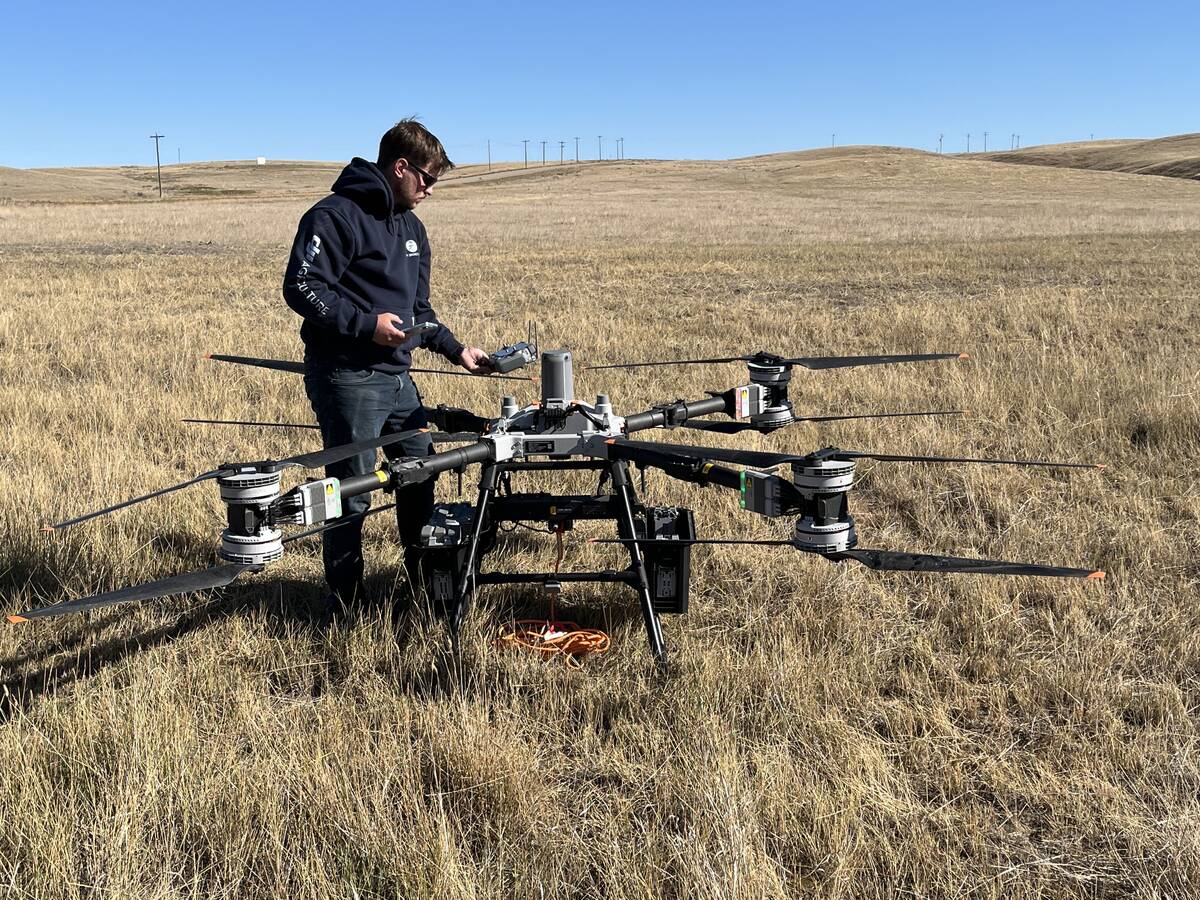
Farm-facing drone does the heavy lifting
Canadian distributor DJI Agriculture unveils its AGRAS T100 drone to western Canada’s producers for greater efficiencies in spraying and granular spreading in fields.
Today’s younger farmers may actually never experience going to one, but they are still very likely to buy something sold through a farm auction.
“The 30- to 40-year-olds are now my buyers,” says Jason LeBlanc, strategic advisor with Steffes Auctioneers.
“And that generation doesn’t necessarily like going to a sale, the environment we used to create.”
And there’s another factor at play working against live, on-farm auctions: as the number of Prairie farms declines, there aren’t as many people living in a local area to attract to a live sale.
“It was nothing to get 500 or 600 people at a sale,” he adds.
“For some of the bigger sales, we’d give out 1,000 or 1,200 bid numbers. That was a normal practice. Now, to get 500 people to a sale, that circle is probably drawing up to 1,000 miles. You just don’t draw those big crowds anymore.
“You have to draw from a large distance now to get a yard full of people.”
However, thanks to technology, farm sales often see large numbers of bidders registered online, following the sale remotely. That online participation is what continues to make farm auctions a viable way to dispose of equipment and even property.
LeBlanc says Steffes, like other firms, still gives farmers the option of having a live, on-farm sale. However, the sale would still be open to online bidders, and he hasn’t seen a significant difference in sale prices if the sale is held live on the farm or timed online only.
With more than 30 years in the auction business, he says the on-farm sales still hold an appeal for him.

“We’d love to do them. We’re cut from that cloth. And we like to do the online live auctions. We’ve done a couple of them this year and they’ve been very successful. We have a couple more coming up in October. Lots of people like them and come to them, but I can’t say they produce more money or anything different. Sometimes farmers just like an outing.”
Steffes Auctioneers used a different blend of live and online-only bidding to handle a particularly large sale this spring. About 200 of the large lots and machines were sold live, while smaller items were grouped into lots, tagged with a QR code, and buyers could use their smartphones to digitally bid on them through the online-only portion of the sale website.
“We tried that and it worked great,” says LeBlanc.
“You put your phone up to that item, and it will take you right to the bids. It’s new technology. Steffes brought that in, and it’s been a good move.”
Over the three-plus decades LeBlanc has been in the auction business, he has also seen a significant change in the total earnings from a farm sale.
“When I first started, if you had a farm auction that hit over $100,000, you were doing something. Then you’d have the odd farm sale that would hit $300,000. Now we sell a Case Quadtrac for $550,000. That’s one item, and then go on to the next one. The numbers have grown so large.”
The COVID-19 pandemic also drove a lot of changes in farm auctions. Large gatherings were not permitted during that time, so online sales suddenly became the only way to conduct one.
However, COVID changed other things in the auction business as well. The number of online auction companies proliferated to take advantage of that new online business opportunity.
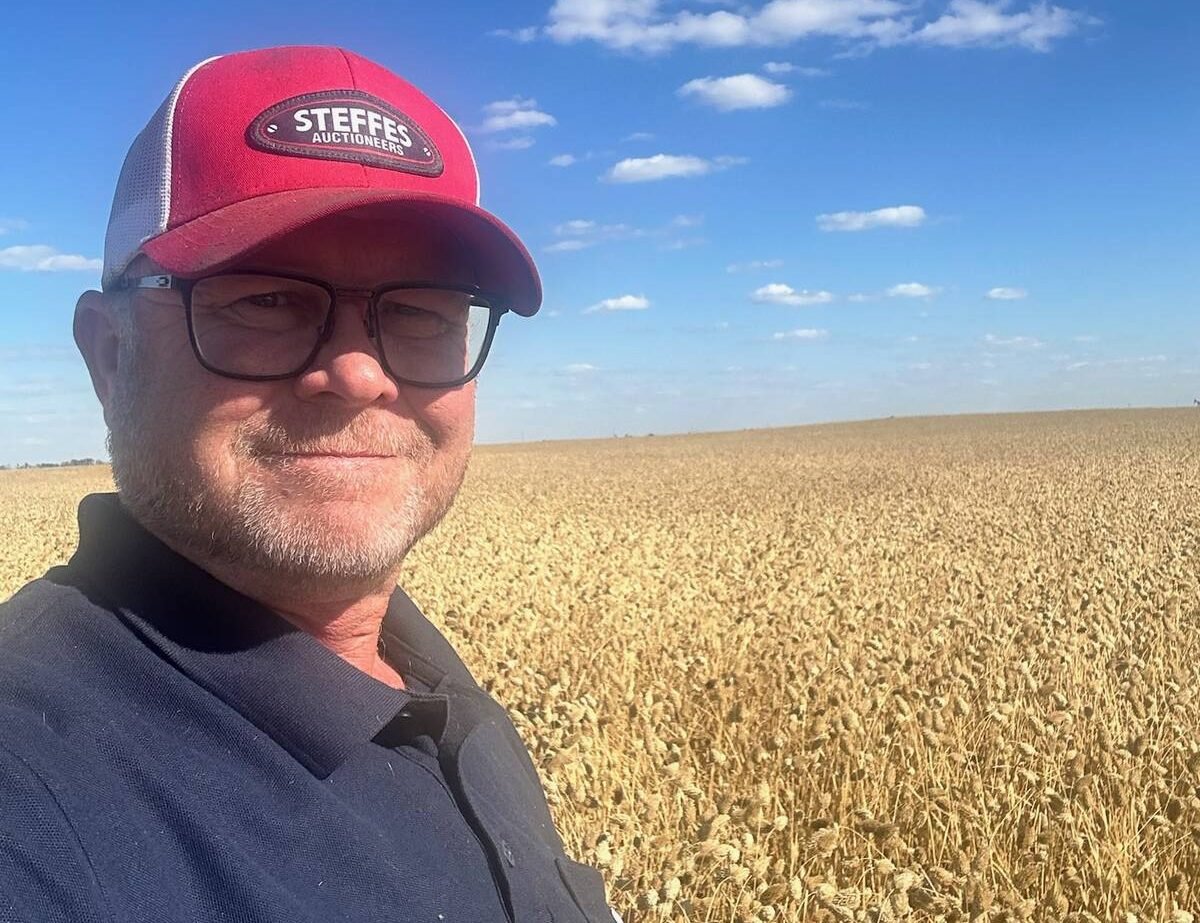
“Everybody got into the auction business when it became just an online format,” LeBlanc says.
“People even tried it on their own because it’s pretty simple to do. But now when the equipment is under pressure, we’re seeing prices dropping, that’s when the auction companies come into play. Who has the marketing? Who has the clientele? We started noticing that change last October and we’re really seeing it now.
“People really have to pick who they can hire for an auction because not every (company) is the same. You need to look at what they do. When COVID hit, you could sell anything. The market was just eating up anything that was available. That’s what’s changed. The companies that didn’t spend on infrastructure and marketing or build their databases up are really falling behind.”
LeBlanc garnered most of his auction experience working with a large auction firm that has a significant international footprint, but he is now leading Steffes Auctioneers’ Canadian effort as it breaks into the Prairie market, beginning in Saskatchewan.
Steffes started in North Dakota about 65 years ago and now operates in multiple U.S. states, so it’s not a newcomer to the auction business.
The company has now been conducting farm dispersals and real estate auctions for about a year on the Canadian Prairies and is also handling other heavy equipment sales here as well.
“We’re in a growth mode,” LeBlanc says.


